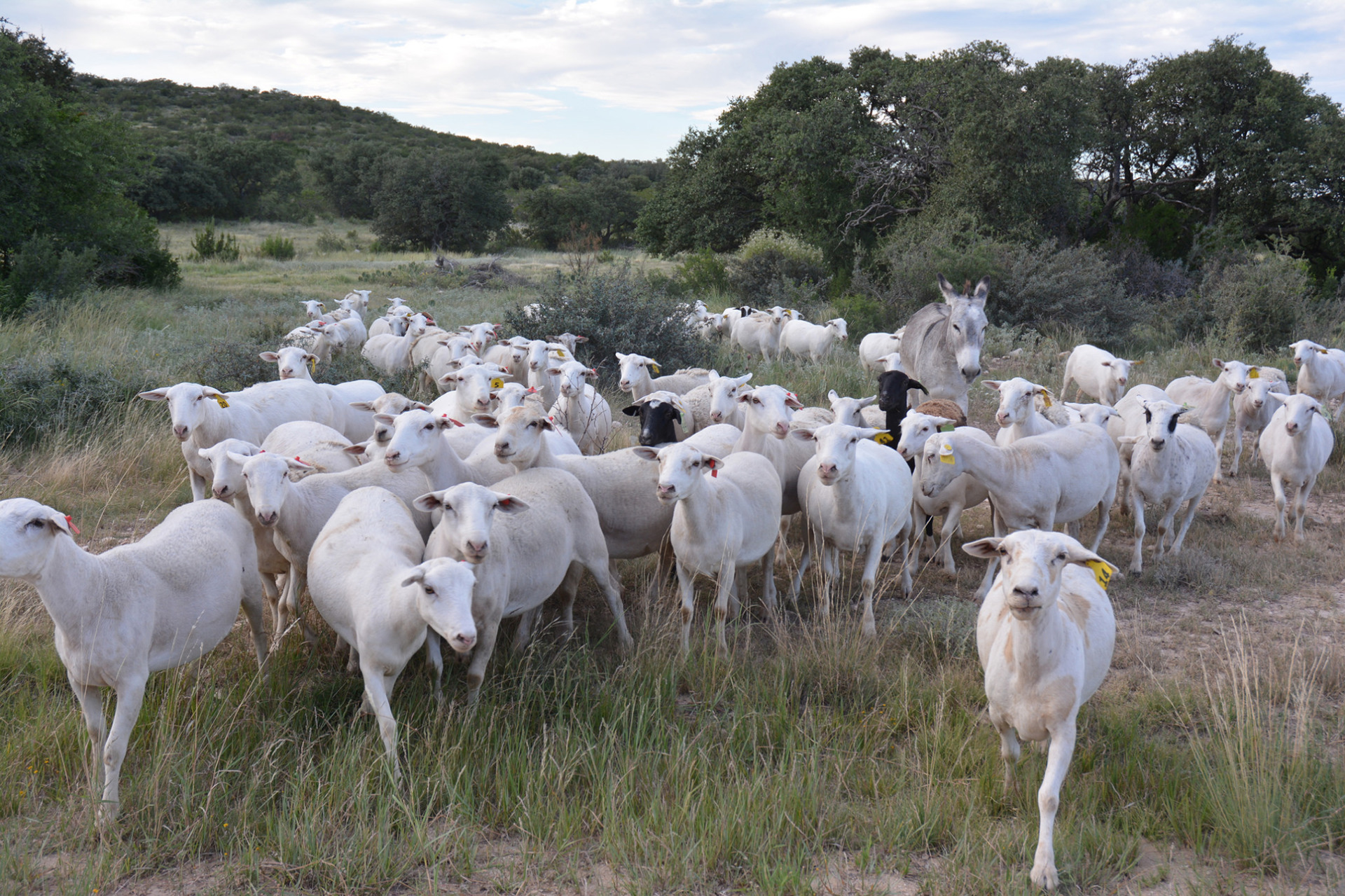Super Juniper Eating Goat Project melds genetics, technology to manage plant pest
Writer: Steve Byrns, 325-653-4576, [email protected]
Contact: Dr. Charles “Butch” Taylor, 325-387-3168, [email protected]
SONORA – If Texans were to pick a plant that brings loathing and dread to city dwellers and ranchers alike, a range expert predicts the answer might well be juniper — or cedar,
as it’s more commonly called.
“Allergy sufferers hate it, and ranchers dread its invasion of their pastures,” said Dr. Charles “Butch” Taylor, superintendent of the Texas A&M AgriLife Research Station at Sonora. “The two predominant species in Texas, redberry and blueberry juniper, even surpass mesquite as a rangeland nemesis since their range is much wider.”

But AgriLife researchers feel they now have a proven biological control to cost-effectively help take a bite out of the problem of cedar encroachment, Taylor said.
As part of a Super Juniper Eating Goat Project, he and a host of other AgriLife Research staff have been working for years to develop goats that willingly consume and thrive on cedar as a major part of their normal diet. To do so, the animals must be genetically able to tolerate and digest the foul-tasting, stomach-upsetting chemicals called terpenes that junipers produce to ward off grazers.
“The use of goats for biological control of woody plants, including cedar, is nothing new. But knowing which goats eat the most cedar for use as Super Juniper Eating Goat seedstock has been a nightmare,” Taylor said. “That’s because standard methods are worthless for screening large numbers of animals.”
Taylor said to speed the process of finding animals genetically equipped to successfully eat cedar, the team turned to near-infrared reflectance spectroscopy. He said the technology is the same used by researchers throughout the country to find the nutritional value and type of forages livestock are grazing. He said the greatest breakthrough for them though was the equipment’s ability to determine which goats eat the most juniper.
“We’ve made good genetic progress over the years,” Taylor said. “According to AgriLife Research geneticist Dr. Dan Waldron at San Angelo, heritability of the cedar-eating trait is about 20 percent. And we now have free-ranging goats that voluntarily consume juniper as over 50 percent of their diet out in the pasture. So in my opinion, that’s pretty good.”
Taylor said the Super Juniper Eating Goat identification process still needs some tweaking. It’s fast, but somewhat complicated and probably too expensive for the average producer. So the team is currently trying to develop an even quicker, more accurate producer-friendly method to identify those goats that have a high tolerance for terpenes. To do so, they are working with the animal science department at Texas A&M University to identify specific genes and gene markers.
Gene markers are easily identifiable genetic signs or “marks” that identify genes with the specific traits being sought.
“Once the technique is worked out, it could be as simple as taking a blood sample from a goat to see if it has the markers indicating it’s a Super Juniper Eating Goat,” Taylor said.
So aside from possibly making a slight dent in the cedar covering much of Texas, and possibly in the future helping legions of allergy sufferers, what other benefits might there be?
Taylor said the research project has all been positive from an animal husbandry and range management standpoint and may actually have an effect on future production costs.
“As a producer, you actually might get two positive aspects from this research work,” Taylor said. “The first point is obvious, the goats will eat more noxious juniper. The second may not be as obvious, but may mean more over time. That is if they consume more juniper while remaining just as productive as they would eating something else, then if you’ve got a lot of juniper on your place, you could have actually increased the carrying capacity of your ranch.”
The Super Juniper Eating Goat Project team has been working with Angora goats and meat goats. As a whole, the Angora goats’ consumption of juniper over the life of the project has remained fairly static. On the other hand, the top end of the juniper-eating meat goats have made and continue to make great strides in the amount of juniper they consume.
None of these goats have ever been offered to the public Taylor said, but that is about to change. As part of the centennial celebration of the AgriLife Research Station set for April 23, 10 proven Super Juniper Eating Goat bucks will be offered at auction, starting at 1 p.m. at the station, which is between Sonora and Rocksprings on State Highway 55.
“The auction will truly be the first of its kind anywhere,” Taylor said. “It’s our hope we will actually be making history by holding this sale while we are celebrating history during the 100 year anniversary of the AgriLife Research station.”
For more information, contact Taylor at 325-387-3168, [email protected] .





